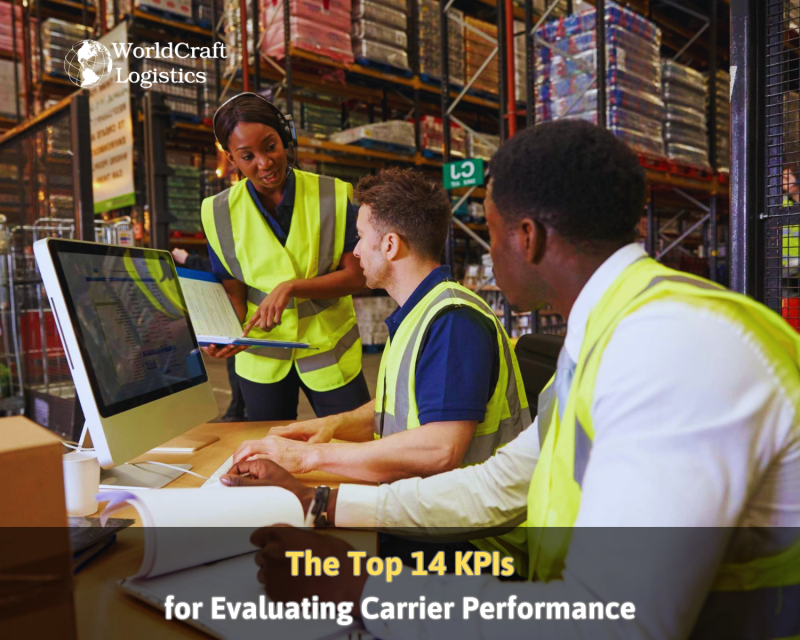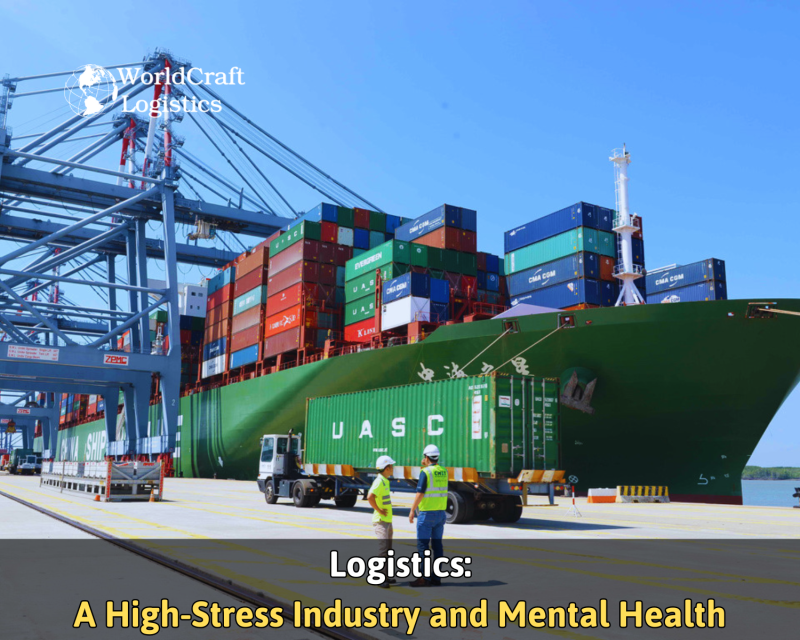
Starting June 1st, 2023 Our warehouse fee will be $0.65/cubic foot per month
In effort to lower the warehouse storage fee during inflation, we have went narrow aisle racking.This construction took us four months but the project is finally completed. With narrow aisle racking, we are able to drop storage by 24%.We as partners will go through this inflation together.
12/28/2023
Carrier and shipper are the key terms in the execution of e-commerce, specifically, and the supply chain in general. Nearly every business, whether self-operated, small enterprises, or those in the learning phase, wonders about the differences between carriers and shippers. Here is Worldcraft Logistics' guide on the definitions, distinct roles of carriers vs shippers, along with tips to enhance your e-commerce transportation operations.
A shipper is the supplier involved in a commercial transaction. For example, a shipper could be an individual responsible for sending essential components to your business for integration into your production processes. Traditionally, shippers undertake the preparation of goods for shipment and pack them securely in an approved container.
While shippers and sellers may be synonymous in certain cases, this is not universally true. Some businesses, particularly smaller ones, might engage with a distributor or fulfillment center. In such cases, the fulfillment center assumes the responsibilities of packaging and shipping services on behalf of the actual seller.
Once goods are prepared for shipping, they are handed over to the carrier. A carrier is an entity entrusted with delivering the products to the buyer or consignee. Carriers employ various transportation methods, including planes, ocean freight, and truck lines, to ensure the delivery of products. Examples of carriers encompass entities such as Uber Freight, USPS, and UPS.
The bill of lading, issued by the carrier, is a crucial document in the freight shipping process. It contains vital information necessary for transportation, including destination, quantity, and type of cargo. This legal document serves three key purposes: confirming ownership of goods, documenting the agreement between the carrier and shipper, and acting as a receipt, verifying that the carrier has taken possession of the freight from the shipper.
Upon transferring freight to the carrier, the shipper's responsibility for delivering goods to the consignee diminishes. The carrier then assumes liability and ownership of the cargo. If any damage, delay, or loss occurs during transit, the carrier is typically responsible for bearing these associated costs.
The term "consignor" may be used interchangeably with "shipper," depending on the country of origin or delivery. Both terms refer to the entity supplying the shipped commodities. However, the shipper or consignor may not be the same entity as the seller, as the seller might engage a distributor to act on their behalf in shipping.
The consignee, listed as the third entity on the bill of lading, is the party to whom the cargo is allocated or consigned. While the consignee is typically the buyer, exceptions exist. In some countries, the consignee listed on the bill of lading might be the buyer's financial institution. Freight is usually released only to the consignee or an authorized representative, and if delivery is intended for another entity, this individual or company is designated as the "notify party" by the consignee.
When eCommerce shippers independently manage their relationships with carriers, they often opt for a business account with a single carrier and channel all their packages through that specific service. The rationale behind this approach is to qualify for volume discounts, making it a practical choice.
However, it's worth noting that each carrier possesses distinct strengths and weaknesses concerning particular delivery zones and package types. For instance, one package might be more cost-effective through UPS, while another could reach its destination a day earlier via FedEx. Collaborating with a third-party logistics provider (3PL) such as Red Stag Fulfillment offers the advantage of flexible carrier selection. As a high-volume shipper engaged with major carriers, we can strategically determine the optimal carrier for each of your orders. This not only results in cost savings but also contributes to reducing delivery times, providing a more efficient and tailored shipping solution for your business.
As an eCommerce shipper, you may encounter unfamiliar terms while collaborating with carriers, manufacturers, dropshipping suppliers, and third-party logistics providers. To assist you in understanding the distinctions between carriers and shippers, as well as other relevant terms, here's a glossary for your reference.
SEO
Digital Marketing/SEO Specialist
Simon Mang is an SEO and Digital Marketing expert at Wordcraft Logistics. With many years of experience in the field of digital marketing, he has shaped and built strategies to effectively promote Wordcraft Logistics' online presence. With a deep understanding of the logistics industry, I have shared more than 500 specialized articles on many different topics.

Labor sources and jobs
01/22/2024

Labor sources and jobs
12/28/2023

Labor sources and jobs
10/19/2023

Labor sources and jobs
04/21/2024

Labor sources and jobs
02/07/2023